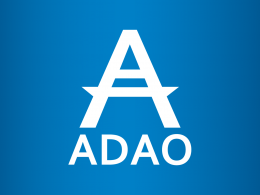A large number of DeFi protocol launches are anticipated on Cardano in 2022.
These protocols need price and asset information that is high-density, historically comprehensive, and has analytical tools.
This information is critical to the design of robust protocols. On-chain data analysis and validation of trading strategies will result in wider adoption and insight into the DeFi ecosystem on Cardano.
High quality data enables more sophisticated trading, stronger decision making, which means more efficient markets. This data will empower the ability to improve economic planning, which will then attract more capital into the ecosystem. This new capital will provide economic fuel to further expand the usefulness of the Cardano platform and drive its adoption.
As the Cardano ecosystem matures, during 2022, the demand for high-quality, comprehensive on-chain data will increase in response to work on sophisticated DeFi protocols. Users will need better data to make evidence-based decisions. Developers and researchers will also need comprehensive tools and data to analyze and improve protocols.
An active, high-performance store of Cardano on-chain financial data will address data availability, quality, and performance challenges.
An on-chain data lab will allow for easy hypothesis testing and interaction with information.
Mallabs proposes to develop a data analytical laboratory.
The Proposal: A Data Analytics Laboratory
The Cardano protocol would benefit significantly from access to on-chain data stores, and a set of laboratory tools to analyze and interact with them. These instruments will enable users of the protocol to make data-driven decisions, and help develop sophisticated financial tools.
Developers will take on two additional challenges: live data sources and on-chain data semantic model
The historical data storage system can be further enriched by creating live streams from on-chain data. These feeds can be subscribed to, allowing near real-time interaction, and the derivation of new metrics from this data. This, combined with data warehousing, will enable the creation of a number of analytical tools, dashboards, and oracles.
The data can be provided through an API which usually requires complex documentation. The developers understand that an intuitive model could be built based on semantics, which will guide the user in exploring data. Semantic models remove the burden of ensuring data is queried correctly, allowing the user to focus on the task at hand. In this way the development of a semantic data model will result in increased user productivity and will be less error prone.
The Roadmap
The developers propose the following work scheme:
- Building a high-performance, high-availability data storage solution.
- Implementation and maintenance of the on-chain data storage infrastructure.
- Live streams for the data warehouse from the Cardano blockchain, using a high-performance custom Cardano Node connector.
- Design of an open source stack solution with integration libraries to perform data analysis without leaving the browser.
- Implementation of a free usage model for typical blockchain users and a fair charge for large data consumers, to cover infrastructure costs.
- Development of a guide on how these systems are built.
As an extension of the proposal:
- Live Data Feeds, which will enable subscriptions to on-chain live data feeds and derived data feeds.
- Semantic model for querying string data. This will make working with the data warehouse and live streams intuitive and will increase the productivity of protocol developers and users.
Milestones in time:
- In 3 Months: The detailed architecture will be designed and provided.
- In 6 months: A high-performance Cardano Node data connector will be developed to feed data into the store. The first iteration of the lab platform and API will be built.
- In 12 months: Stretching goals of live data feeds and semantic models will be attempted. Documentation will be completed through GitBook and the solution will be released to the community.
Expected launch date: Launch August 2022, Completion December 2022.
Budget
The budget detail is as follows:
- 120 hours of front-end development, at USD 100 per hour with taxes: USD 12,000
- 250 hours of back-end development and on-chain from Haskell, at USD 150 per hour with taxes: USD 37,500
- Hosting cost per month for 6 months, then self-funded by high-volume consumers, reaching 7 total instances (approximate number), each approximately USD 640 per calendar month (approximate cost), totaling USD 4,480 per month, for 9 months: USD 40,320
- Other overhead costs: graphics design, software licenses (eg, JavaScript display libraries), outreach, growth, and integration: USD 3,000
Total funds requested: USD 92,820.
The Team
Mallabs Ltd. is a group of Haskell native, quantitative financial researchers, developers with years of experience building advanced and scalable business systems at leading financial institutions.
Jarek Hirniak is the founder and lead developer of Maladex, with over 8 years of experience leading multiple development teams in traditional financial institutions such as UBS and Citadel Securities.
He has a Master’s in Computer Science from the University of Edinburgh (where Phil Wadler and Aggelos Kiayias research and teach) with a specialization in concurrent and distributed systems, functional programming, and formal methods. Head of Platforms in an international bank leading 3 teams, designing and building complex financial systems.
He worked at Citadel Securities in the design and construction of a novel approach to market making. At Microsoft Research, he was involved in the design and implementation of highly scalable (clustering) machine learning algorithms used in Microsoft Office and Windows analytics (exabyte data processing).
He is a seasoned Haskell developer, used Haskell multiple times in personal and commercial applications, active conference participants, and Haskell hackathons. I have completed the first cohort of the Plutus Pioneer program and got NFT to provide it.
https://www.linkedin.com/in/hirniak
Tony Morris, the technical lead, has been programming with Haskell for 18 years. He is the developer of the course and a former Coordinator/Professor of Logic and Functional Programming at the University of Queensland, which focuses on Haskell. It contributes to more than 300 open source software projects using software engineering (SF) methods using various programming languages.
https://www.linkedin.com/in/tony-morris-1961a02
PEH Zheng Yan, a software engineer, has 5 years of technical experience in finance, property, and airlines. He is an active speaker at local Malaysian functional programming clubs, often giving talks on functional programming and software architecture within Malaysia. He has experience delivering effective and secure software in multidisciplinary global teams.
https://www.linkedin.com/in/zheng-yan-peh-947a7a117
website: https://www.maladex.com
You can read the original proposal at Ideascale.










